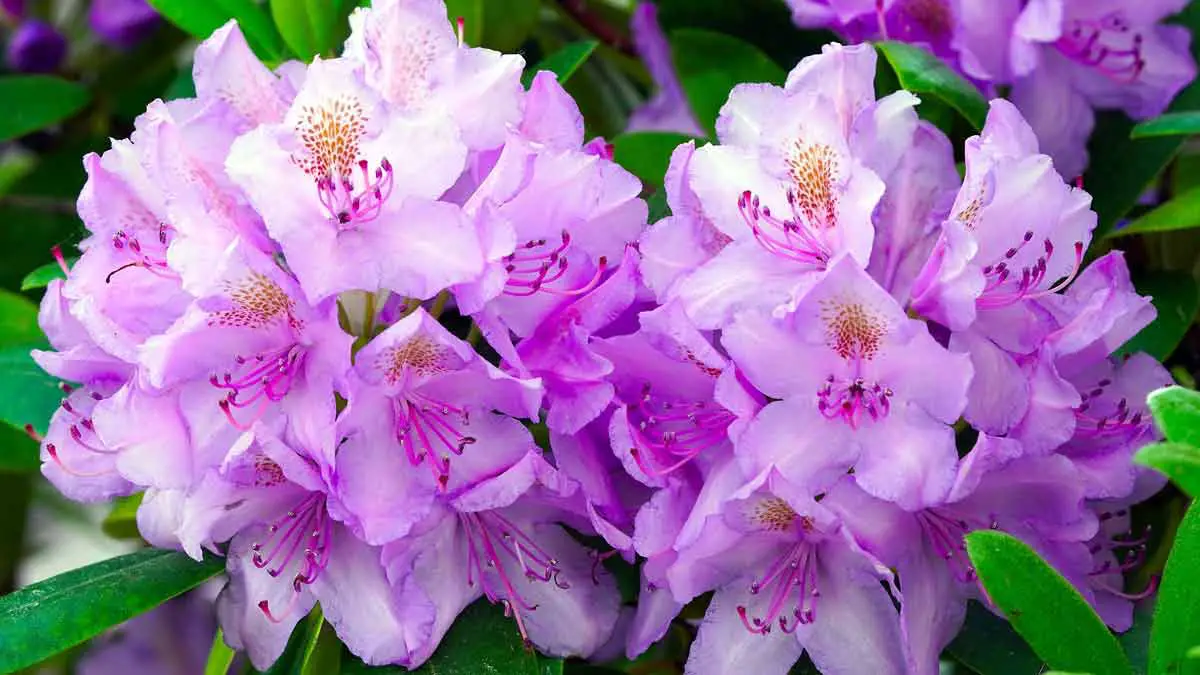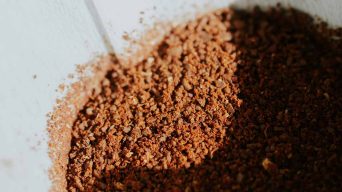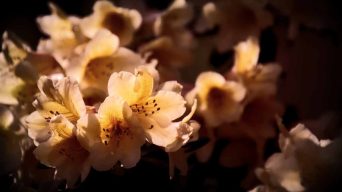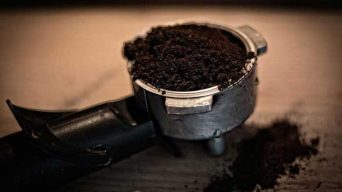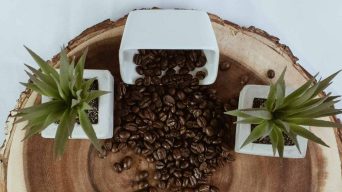Key Takeaways
- Coffee grounds can benefit rhododendron growth by increasing soil acidity, adding essential nutrients, suppressing pests and diseases, and improving soil texture and drainage.
- Using coffee grounds in moderation can be a cost-effective and sustainable way to fertilize acid-loving plants like rhododendrons. Still, overuse can lead to overfertilization or increased soil acidity, harming nearby plants.
- Mixing spent coffee grounds with other organic matter like compost before use is recommended to balance nutrient content and reduce risks associated with using fresh coffee grounds directly on plants. Organic fertilizers like eggshells, banana peels, fish emulsion, and seaweed extract can also benefit rhododendron growth.
Rhododendrons, azaleas, and other acid-loving plants are a stunning addition to any garden.
Many plant owners wonder if using coffee grounds can benefit these beautiful shrubs while being cost-effective and sustainable.
You may be surprised to learn that spent coffee grounds offer a range of benefits for rhododendrons – from improved soil quality to pest control.
However, it’s important to understand potential risks and how to use them correctly in your garden.
In this blog post, we will discuss the advantages and drawbacks of using coffee grounds on rhododendron plants so you can make an informed decision before incorporating them into your gardening routine.
How Coffee Grounds Affect Rhododendron Growth
The growth of rhododendrons is affected by coffee grounds in various ways.
These include increased soil acidity, improved nutrient content, pest, and disease suppression, and better soil texture and drainage.
Increased Soil Acidity
One of the primary effects of using coffee grounds on plants like rhododendrons is increased soil acidity.
Acid-loving plants, such as hybrid rhododendrons, azaleas, and blueberries, thrive in acidic environments that help support their healthy growth.
For instance, a gardener may notice that her rhododendron leaves begin turning yellow – this could be due to alkaline soil affecting nutrient uptake by the plant’s roots.
By spreading used coffee grounds around the base of the shrub (about one-half inch layer), she can gradually increase soil acidity and create more favorable conditions for her acid-loving plants over time.
Nutrient Content
One of the primary reasons coffee grounds are considered beneficial for rhododendrons is their nutrient content.
Used coffee grounds contain:
- A good amount of nitrogen.
- An essential nutrient for plant growth and health.
- Small quantities of phosphorus and potassium.
However, striking a balance is crucial when using coffee grounds for your acid-loving plants.
Overloading the soil with too much nitrogen can lead to over-fertilization and inhibit the proper absorption of other vital nutrients.
To avoid these issues, mix spent coffee grounds with other organic matter like leaf litter or garden soil before applying them around your hybrid rhododendrons or azaleas.
Pest And Disease Suppression
One of the remarkable advantages of using coffee grounds on rhododendrons is their ability to suppress pests and diseases.
Many gardeners swear by coffee grounds as a natural deterrent for slugs, snails, and ants that can wreak havoc on your beloved acid-loving plants.
Furthermore, studies have shown that adding coffee grounds around your rhododendron plants can help prevent common fungal infections, such as powdery mildew or root rot.
This sustainable approach contributes essential nutrients to the soil and shields your valued shrubs from pesky invaders and harmful pathogens.
Improved Soil Texture And Drainage
Adding coffee grounds to the soil can positively impact the texture and drainage of the soil, which can benefit rhododendron growth.
The coarse texture of coffee grounds helps to aerate the soil, allowing water and essential nutrients to flow more easily.
Furthermore, using organic mulch-like coffee grounds can help improve soil structure over time.
As the coffee grounds decompose and break down, they release essential nutrients into the soil, adding valuable organic matter that feeds beneficial microorganisms in the rhizosphere.
Incorporating spent coffee grounds into your garden regimen is an excellent way to keep your rhododendrons growing strong and healthy.
Benefits Of Using Coffee Grounds On Rhododendrons
There are several advantages to using coffee grounds on your rhododendrons.
It can save you money, promote organic and sustainable gardening, and reduce waste.
Read on to discover how coffee grounds can benefit your plants.
Cost-effectiveness
Using coffee grounds on your rhododendrons can be a cost-effective way to improve soil quality and fertilize your plants.
As coffee shops often throw away spent grounds, it’s an easy way to repurpose waste and reduce costs.
However, it’s important to consider the risks associated with using coffee grounds on rhododendrons before making any decisions.
Overusing fresh or excess coffee grounds can result in over-fertilization or nitrogen burn, harming your plant’s growth.
Careful consideration is needed when deciding how much and how often to use them.
Organic And Sustainable Gardening
Organic gardening involves using natural methods for fertilizing and pest control instead of chemicals.
It’s an environmentally friendly approach that promotes healthier soil, plants, and people.
Organic materials like coffee grounds can be especially beneficial for rhododendrons because they require acidic soil to thrive.
Coffee grounds are a cost-effective way to add acidity without relying on chemical fertilizers that may harm the environment.
Additionally, using organic materials in your garden helps promote healthy microbial activity in the soil, which leads to stronger plants overall.
Reduced Waste
Using coffee grounds on your rhododendrons provides important nutrients and reduces waste.
Coffee grounds are a byproduct of the coffee-making process and can be easily obtained for free or at a low cost from local cafes and restaurants.
In addition, using organic materials like coffee grounds as fertilizer helps to promote sustainable gardening practices that benefit both plants and the environment.
Rather than relying on chemical inputs that can harm soil health over time, using natural fertilizers like coffee grounds helps to improve soil fertility while reducing negative environmental impacts.
Risks Of Using Coffee Grounds On Rhododendrons
It’s important to note that using coffee grounds to fertilize rhododendrons can result in overfertilization and increased soil acidity, damaging other plants.
Nonetheless, when used correctly and in moderation, the advantages of using coffee grounds as an organic fertilizer surpass the potential hazards.
Overfertilization And Nitrogen Burn
One of the critical risks associated with using coffee grounds as fertilizer for rhododendrons is overfertilization and nitrogen burn.
While coffee grounds contain essential nutrients like nitrogen, phosphorus, and potassium that are good for soil health, an excess of these can harm plants by leaching into groundwater or causing toxic build-up in the soil.
It’s important to use coffee grounds in moderation and only when necessary.
Testing the pH balance of your soil regularly helps ensure you’re not adding too much acidity from the coffee grounds.
Increased Soil Acidity Can Harm Other Plants
While coffee grounds can be an excellent fertilizer for acid-loving plants like rhododendrons, they can also harm other plants that prefer neutral or alkaline soil.
Increased soil acidity caused by too much coffee ground use can change the pH balance of the soil, making it difficult for some plants to absorb nutrients and grow properly.
For example, vegetables like tomatoes and root crops like carrots may suffer from stunted growth if exposed to increased soil acidity from coffee grounds.
It’s important to consider the specific needs of all the plants in your garden before using coffee grounds as a fertilizer.
Molds And Bacteria Growth
Using coffee grounds on rhododendrons can lead to the growth of molds and bacteria, which pose risks to the plant and soil.
When coffee grounds are added in excess or not adequately composted, they can create a favorable environment for pathogens to thrive.
Molds like Botrytis cinerea can cause bud blast disease in rhododendrons, while fungi like Fusarium wilt can cause root rot.
Bacteria such as Pseudomonas syringae pv. arenariae can also harm plants by causing leaf spots and blight.
Attractant For Pests
Using coffee grounds on rhododendrons can attract pests if not used correctly.
The high nitrogen content of fresh coffee grounds serves as a food source for fungus gnats, which can lead to an infestation.
However, if the coffee grounds are composted before use, they can become less attractive to pests and more beneficial for plants.
On the other hand, coffee grounds can also repel certain pests, such as wasps, snails, and mosquitoes.
Mixing them with other organic matter or burning them beforehand can enhance their potency and act as a natural pest repellent for your plants.
Tips For Using Coffee Grounds On Rhododendrons
Here are some tips for using coffee grounds on rhododendrons.
Mix the spent coffee grounds with other organic matter to create a balanced soil amendment.
Use In Moderation
While coffee grounds can benefit Rhododendron growth, it is important to use them in moderation.
An excessive amount of coffee grounds can create a nitrogen-rich environment that may lead to overfertilization and nitrogen burn, which could damage or even kill your plants.
Furthermore, the acidity levels found in coffee grounds could harm other plants nearby if not mixed well with other soil amendments.
To avoid negative effects on your Rhododendrons or surrounding plants, mix coffee grounds with other organic matter, such as compost, before use.
Add an appropriate amount based on your garden bed or container size.
Mix With Other Organic Matter
Mixing coffee grounds on your rhododendrons with other organic matter is best to get the most out of using coffee grounds.
This helps to balance the nutrient content and reduce acidity levels in the soil.
For example, if you have a compost bin or worm bin at home, you can add used coffee grounds and other kitchen scraps such as fruit peels and vegetable scraps.
This will create a well-balanced fertilizer rich in essential nutrients for your plants.
Compost Before Use
Before sprinkling coffee grounds on your rhododendrons, it’s important to compost them first.
This helps break down the coffee grounds, making the nutrients easier for plants to absorb.
Add spent coffee grounds to your compost pile and other organic materials like shredded leaves or grass clippings.
Composting also helps reduce the risks associated with using fresh coffee grounds directly on plants.
Without the decomposition process, fresh coffee grounds can attract pests and promote mold growth.
Avoid Using On Recently Planted Seedlings
If you plan on using coffee grounds on your rhododendrons, it’s important to note that they shouldn’t use them on recently planted seedlings.
This is because coffee’s caffeine content can inhibit new plant growth.
Once your rhododendrons are mature enough, using coffee grounds can benefit them by providing nutrients and suppressing pests and diseases.
However, using them in moderation is crucial, as excessive amounts can lead to overfertilization and nitrogen burn.
Mixing the coffee grounds with other organic matter or composting them before use can help balance their acidity and reduce potential risks.
Other Organic Fertilizers For Rhododendrons
Aside from coffee grounds, various other organic fertilizers can improve the growth of your rhododendrons.
These include eggshells, banana peels, fish emulsion, and seaweed extract.
Eggshells
Eggshells are a great natural additive that can benefit the growth of rhododendrons.
They are full of calcium, essential for promoting healthy plant root growth.
Rhododendrons and other acid-loving plants thrive in soil with a pH range between 4.5 and 6.0, making eggshells an ideal choice as they do not affect soil acidity levels.
As they break down, eggshells slowly release nutrients into the soil, acting as a natural fertilizer and improving soil structure over time.
Banana Peels
Banana peels are a great source of potassium and other micronutrients that plants need to grow.
Though they do not contain nitrogen, the high organic sources of potassium in banana peels help plants create flowers, produce fruit, and promote healthy root growth.
This is especially helpful for roses as banana peels are a good fertilizer due to their 45% potassium content.
Chop some banana peels into small pieces and add them to your soil or compost heap to give your plants an extra boost of nutrients.
Fish Emulsion
Fish emulsion is an organic fertilizer used for decades to promote healthy plant growth.
It’s derived from fish and can be used on rhododendrons with other organic fertilizers such as coffee grounds, eggshells, and banana peels.
While this type of fertilizer can provide essential nutrients to your plants, it’s important to remember that overuse can negatively impact the environment.
Seaweed Extract
Seaweed extracts are becoming popular for fertilizing rhododendrons due to their organic and sustainable nature.
They contain various beneficial substances such as growth hormones, micronutrients, and amino acids that can help boost plant growth and development.
In addition, trace levels of inorganic nutrient elements present in seaweed fertilizers act as biostimulants for plant growth.
Although some environmentalists have raised seaweed harvesting and manufacturing concerns, natural seaweed extracts such as kelp meal and liquid seaweed fertilizer are safer than chemical alternatives for the environment and your plants.
Final Thoughts
Using coffee grounds on rhododendrons can benefit plant growth and soil quality.
Coffee grounds are a cost-effective and sustainable option for organic gardening while also reducing waste.
However, it is essential to use coffee grounds in moderation and compost them before use to avoid overfertilization or the attraction of pests.

